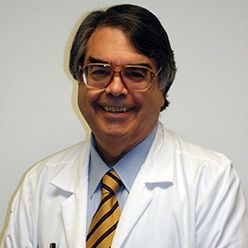Article
High Dose Vancomycin Optimal for Clostridium difficile Treatment
Author(s):
An initial high dose or high dose escalation can work best for Clostridium difficile treatment.
Burke A. Cunha, MD, Chief, Infectious Disease Division, NYC Winthrop Hospital

Burke A. Cunha, MD
Using an initial course of vancomycin or doing so in high dose escalation is often the most efficacious regimen for the treatment of Clostridium difficile (C. difficile) diarrhea, according to new findings.
Researchers from NYU Winthrop Hospital in Mineola conducted a hospital-wide study in order to further understand high dose vancomycin as a sole C. difficile treatment. While the treatment guidelines stipulate a course of 125 mg vancomycin, the researchers decided to start with a course of 250 mg vancomycin. Researchers developed an algorithm that if a patient did not show marked improvement after 3 days on 250 mg oral vancomycin, the dosage would be upped to 500 mg oral vancomycin.
The study is “making a plea that if your patient doesn’t turn around—not cured, just markedly improve by decreasing the number of stools by 75% or so roughly—in 3 days, then it is a reasonable thing to not add another drug, just take the oral vancomycin and go up,” study author Burke A. Cunha told MD Magazine in an interview. “You go from 250 mg, if that’s what you’re using, to 500 mg and complete the 10 day course of therapy.”
Over a 24-month period, there were 160 eligible patients who tested positive for C. difficile. The patients were then divided into 3 groups: conventional dosing group, high dose escalation group, and primary high dose treatment.
The first group included 65 patients who were treated with 125 mg oral vancomycin. They were clinically cured after an average of 5 days, after an average of 14 days of therapy. The second group included 33 patients who were originally treated with 250 mg vancomycin. After 72 hours with their initial therapy, the researchers did not notice marked improvement, increasing the oral vancomycin dose to 500 mg. Clinical resolution occurred at day 10, which was on average only 4 days after the escalation dose. There were 14 patients in the high-dose group treated with vancomycin 500 mg for the entire therapy course. Clinical resolution occurred after 5 days on average.
Nothing about the results surprised Cunha. It was his impression all along that the high dose escalation or primary high dose was the most effective in reaching clinical resolution for C. difficile.
“When you tell people, they’ll say, oh that’s anecdotal. So we studied it, and it’s not anecdotal,” he said.
The study has both stewardship implications and hospital epidemiology implications because physicians can reach the heart of the infectious problem sooner. The hospital doesn’t want people with it at the hospital if they can help it, and they don’t want the infected patients at the hospital for longer than they need to be, he said.
“You can say that [the escalation method] costs more because you doubled the dose, you’re decreasing the duration,” Cunha added, favoring the method because of the decrease of the overall cost burden to the patient and hospital. “You’re decreasing the hospital stay. It’s got all these other things. The cost of the vancomycin by doubling the dose doesn’t have any effect on the total cost of the hospitalization and the healthcare system.”
The full study, titled “Enhanced Efficacy of High Dose Oral Vancomycin Therapy in Clostridium difficile Diarrhea for Hospitalized Adults Not Responsive to Conventional Oral Vancomycin Therapy: Antibiotic Stewardship Implications,” was published in the Journal of Clinical Medicine.





